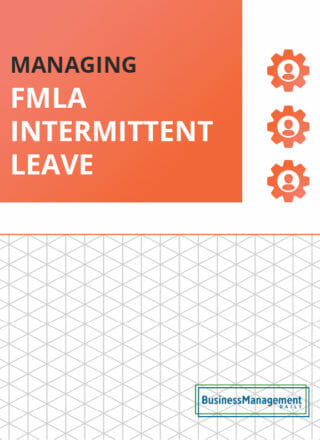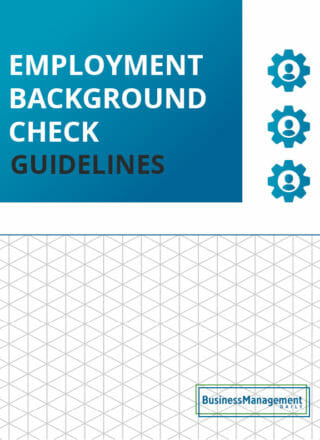It’s time to rewrite your company’s PTO policies
 With constantly changing rules and regulations, managing paid time off has never been more difficult. It can be hard to know exactly when workers can tap into their bank of paid or unpaid leave. Will it be workers’ compensation? Or perhaps unpaid FMLA leave. What about paid FMLA? Maybe unpaid ADA leave? Is that even a thing?
With constantly changing rules and regulations, managing paid time off has never been more difficult. It can be hard to know exactly when workers can tap into their bank of paid or unpaid leave. Will it be workers’ compensation? Or perhaps unpaid FMLA leave. What about paid FMLA? Maybe unpaid ADA leave? Is that even a thing?
PTO policy may not be something you consider updating regularly, and that probably worked for a long time. However, with an increased focus on paid and unpaid leave in the public eye, companies with outdated PTO policies could find themselves in messy situations.
Leave laws were already complex, but federal pandemic legislation and swiftly changing local laws, have made it hard to keep up. With that in mind, it’s probably time to review and rewrite your PTO policies. Here’s what you need to consider when doing so to ensure your policies are as legally sound as possible.
Review your local paid time off laws
The Fair Labor Standards Act (FLSA) is the federal law that dictates how employers pay their employees. It does not force employers to provide paid time off, whether sick leave, vacation, or personal time. For years, employers who provided paid leave did so voluntarily, usually through a paid time off (PTO) policy. They set the rules for when and for what reason workers could take PTO. There was little or no interference from federal, state, or local authorities. That’s changing.
In the last few years, there has been a massive expansion of various kinds of paid leave. That’s happened because, despite pressure from pro-leave organizations, Congress has not passed a true national paid leave mandate. States and cities have stepped in. Many have passed their own employer mandates or social insurance-based laws allowing paid time off for various reasons. The result is a patchwork of laws that apply depending on where employers and their workers are located.
The pandemic has accelerated the trend, as states and cities have added COVID-19 paid leave mandates to the existing patchwork. Plus, at least temporarily, Congress authorized limited nationwide pandemic-related paid leave under the Families First Coronavirus Crisis Response Act (FFCRA). More changes are coming as the Biden administration has signaled it wants to expand the FMLA to include paid leave.
For employers with PTO plans, it’s crucial to regularly review the latest leave laws and integrate them.
Bottom line
Keep an eye out for federal legislation. In the meantime, find out exactly how much paid time off your state and city laws require as it could have changed. Be sure your PTO policy covers at least that minimum.
PTO, FMLA leave, and workers’ compensation:
The first national leave law was the Family and Medical Leave Act (FMLA). Passed in 1993, it provides unpaid job protected leave for workers. For most reasons, the time limit is 12 weeks. Amendments over the years have added up to 26 weeks of unpaid leave for some military-related reasons. Congress also temporarily provided paid pandemic-related leave that expired at the end of 2020. The most common use of unpaid FMLA leave is for serious health conditions. Leave can be taken for the employee’s own illness or that of family members. It is also available for birth, adoption, and foster care bonding as well as exigencies resulting from military deployment. In addition, workers caring for a relative suffering a military-service related injury can take up to 26 unpaid weeks off.
While FMLA leave is unpaid, Congress realized that employers often offer PTO. Therefore, the law included an option to offset paid leave against unpaid FMLA. Employees may choose to use PTO in order to be paid during FMLA leave.
In addition, employers may require that employees take their PTO while on FMLA. Your PTO policy should specify if this is the case and clearly state that PTO runs concurrently with unpaid FMLA. Otherwise, your employees could take any accumulated PTO first and still be entitled to another 12 weeks of unpaid leave. In effect, employees could be off for almost a half year. Those taking 26 weeks of unpaid military FMLA could conceivably be off even longer if they take PTO first.
States also allow time off from work for workplace injuries under their workers’ compensation programs. Typically, injured workers receive reduced pay while unable to work because of those injuries. Employers generally are not allowed to substitute PTO for workers’ comp benefits. That is, you must file a workers’ comp report for on-the-job injuries and can’t just tell the employee to use PTO.
The U.S. Department of Labor (DOL) also allows employers to run workers’ compensation leave concurrent with FMLA leave. Employers must notify workers that FMLA leave is running concurrently.
Bottom line
When rewriting your PTO rules, make sure you choose to run PTO concurrent with unpaid FMLA leave. The same goes for workers’ compensation leave. Your PTO policy should clarify whether you will also be ‘topping off’ workers’ comp pay with PTO. Spell out exactly what formula will be used and how this impacts remaining PTO balances. Check state and local laws, too. Take advantage of any similar concurrent leave provisions to cut down on additional time off beyond what laws require.
PTO and the ADA
Disabled employees may be covered by the Americans with Disabilities Act (ADA). It requires employers to offer reasonable accommodations that allow a disabled employee to perform the essential functions of their job. A disability is a physical or mental impairment that substantially limits the ability to perform an essential life function.
As a practical matter, many ADA disabilities overlap with serious health conditions under the FMLA. Thus, for many workers, your PTO policy has to take into account the FMLA and the ADA. If you have already checked your PTO policy to make sure you are running FMLA concurrently, you’re halfway there. You must also take into account the ADA’s reasonable accommodation requirement. Here’s why.
Most PTO policies state that once employees have used up their PTO and other leave, they cannot miss more work. If they do, they can be discharged. But in the last few years, the EEOC has cracked down on employers with rules like that. The EEOC has sued employers, testing whether a no more time off policy violates the ADA. Their argument is that more time off may constitute a reasonable accommodation under the ADA.
For example, a disabled worker who is out of PTO under your policy may need a short leave. Or he may just have started and not yet earned PTO to use for disability-related therapy sessions. In both situations, the EEOC says you should consider unpaid leave as an accommodation. After a series of test cases, federal judges have endorsed the EEOC position. As long as the disabled worker isn’t requesting indefinite leave, the time off should be allowed. It doesn’t matter that he has no PTO earned or remaining.
Bottom line
Rewrite your PTO policy to clarify that disabled employees may be entitled to additional unpaid time off. Do this by including a statement that says disabled employees can request additional unpaid time off as a reasonable accommodation. Include appropriate contact information so that employees know how to request more time off.
Schedule regular PTO rule updates
The Biden administration and Congress are likely to introduce, consider, and possibly pass new paid leave laws. These include possible reinstatement of the FFCRA paid leave provisions as well as more general paid FMLA. It’s also clear that more states are mandating paid leave for a variety of purposes. Add a regular, at least annual, PTO policy update to your calendar in order to stay on top of changes.





